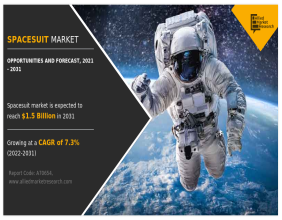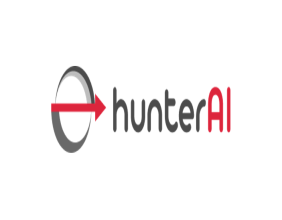Highlights:
- Altech Chemicals is set to commercialise 100MWh Sodium Alumina Solid State (SAS) CERENERGY® batteries for the grid storage sector.
- The Company has entered into a join venture with Fraunhofer IKTS to commercialise the batteries to be constructed on Altech’s land in Germany.
- CERENERGY® batteries are lithium, graphite, copper, and cobalt free.
- These batteries have many advantages compared to lithium-ion batteries.
Altech Chemicals Limited (ASX:ATC), a game changer in the battery material space, has executed a Joint Venture (JV) with world-leading German battery institute Fraunhofer IKTS (“IKTS”) to commercialise IKTS’ revolutionary CERENERGY® Sodium Alumina Solid State (SAS) Battery.
On back of this news, ATC shares skyrocketed over 31% to AU$0.105 on 14 September 2022.
The JV will commercialise a 100 MWh Sodium Alumina Solid State (SAS) batteries project for grid storage in Schwarze Pumpe, Saxony, Germany and will be constructed on Altech’s land. Altech, inclusive of associated entity Altech Advanced Materials AG, owns 75% of the JV company and Fraunhofer IKTS holds the rest.
For further insights into the company's projects, click here.
Sodium Alumina Solid State (SAS) CERENERGY® batteries:
A revolutionary alternative to lithium-ion batteries, CERENERGY® batteries were developed over the previous eight years by IKTS, with an investment on R&D of €35 million on and another €25 million in the pilot plant.
CERENERGY® batteries have various advantages over the Li-ion battery. CERENERGY® batteries are fire and explosion-proof with an ultra-long-life span which can last up to twice that of a Li-ion battery, and can be operated in extreme cold and desert climates.
CERENERGY® batteries also solve the issues related to production, supply chain, price and ethical constraints associated with different critical battery metals, considering that the battery technology uses table salt and nickel which is free of lithium, cobalt, graphite, and copper.
These high energy capacity (110-130 Wh/kg) batteries are ideally suited for the grid storage or long-duration energy sector where very high power in a short interval (like high power EVs) is not required. These batteries can be configured to meet demand greater than 600 V.
Altech also believes these batteries can provide high security at a low acquisition and operating costs, and thus are suitable for the grid (stationary) energy storage market, which is expected to grow by 28% CAGR (Compound Annual Growth Rate) in the coming decades, as highlighted in the Company’s announcement.
A CERENERGY® battery consists of a solid ceramic tube (conductive to sodium ions but insulator for electrons) with a positive terminal in the center. A solid ceramic tube is able to perform the same function as a liquid electrolyte in a lithium-ion battery.
The steel canister where the ceramic tube is housed acts as the negative terminal. The positive and negative terminal tabs are installed at the top of the cell for electron transfer and connection to other cells.

Source: Company’s update
Every cell operates at 2.58V, and 40 cells are installed in a refractory insulated module casing, each rated at 10KWh and 100 Ah.
Comparative assessment of li-ion battery and SAS CERENERGY® battery:
- Fire and Explosion Issues:
Lithium-ion battery issue: Presence of flammable liquid electrolyte and plastic separators in lithium-ion batteries. The problem of overheating, physical damage and overcharging causes a chemical chain reaction of thermal runaway producing oxygen inside the battery, which is very difficult to stop once it starts.
SAS CERENERGY® battery alternative: Use of solid inflammable ceramic tube makes it fireproof.
It does not contain any oxide and hence doesn’t produce any oxygen. All these advantages make it suitable for indoor industrial and commercial energy storage installations in sensitive environments where the presence of water bans the use of Li-ion batteries.
- Narrow Operating Temperature Range:
Lithium-ion battery issue: Li-ion batteries have an operating temperature range of +150C to +350C. At lower temperatures, the increase in electrolyte viscosity slows down the reaction and lithium transfer. For instance, at 00C, li-ion battery efficiency drops to 70%. It also requires an external heat sink to operate efficiently in higher-temperature operations.
SAS CERENERGY® battery alternative: The absence of liquid electrolyte provides a high operating range of -200C to +600C for the CERENERGY® battery. Their full insulation makes them at touch temperature, even after having an internal high-temperature battery (operates at 270-3500C), making it suitable for grid energy storage even in cold and desert climates.
- Battery Lifespan:
Lithium-ion battery issue: Lithium-ion degradation due to detrimental side reactions, dendrite growth, and the breakdown of anode and cathode structures reduce the battery life to 7-10 years. The degradation will accelerate in operation outside the ideal temperature range, thus reducing its life further.
SAS CERENERGY® battery alternative: Absence of first cycle loss, detrimental side reactions, dendrite growth or breakdown of anode and cathode structures increase the SAS battery life span to more than 15 years.
- Production, supply chain, price and ethical constraints associated with different critical battery metals:
Lithium-ion battery issue:
Lithium - The high sensitivity of lithium price due to its major production in four countries, Australia, Chile, China, and Argentina, poses a challenge in meeting the forecast demand for both EVs and the stationary energy storage market.
Cobalt – About 20 kg of cobalt is used in every 100 kilowatt-hours (KWh) pack in EV batteries. It is a key element in boosting energy density and battery life in lithium-ion batteries. Also, cobalt is considered the highest material supply chain risk for electric vehicles (EVs) in the short and medium term, due to Cobalt’s high dependency on the Democratic Republic of Congo, which produces about 70% of global cobalt.
Copper – The high requirement of copper in EVs compared to internal combustion engine vehicles (2.5 times more) and the absence of enough copper mines being built or expanded to provide all the copper needed is also an area of concern.
SAS CERENERGY® battery alternative: The advantage of being a sodium chloride salt and nickel-based pure solid-state battery solves the issues and concerns related to the abovementioned metals. Along with this, it does not require graphite or copper in the anode side of the battery as there’s no anode in the SAS battery. Anode only forms during the charging and discharging process.
Silumina AnodesTM Project:
Altech remains focused on its Silumina AnodesTM Project, located on the same site in Saxony, Germany.
The cCmpany will provide the land at Schwarze Pumpe, as well as overall guidance and supervision to the SAS project, while there will be a separate team allocated to the SAS project, mainly staffed by IKTS team members and an independent engineering company.
Altech doesn't want to lose its focus on the current Silumina AnodesTM Project; hence, a service contract with IKTS will be the main way to develop the SAS project.



